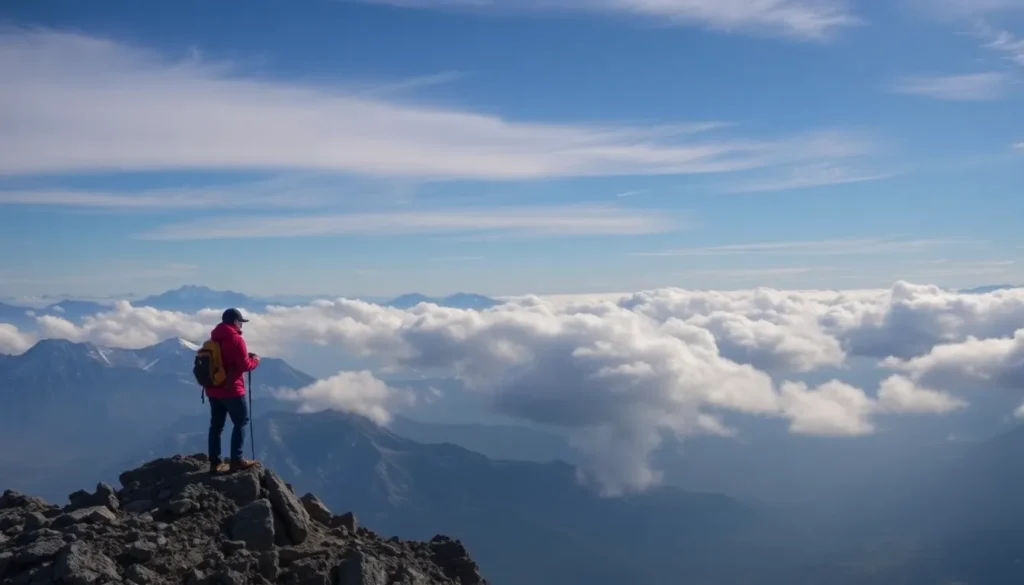What is altitude sickness symptoms and how to prevent it

Are you worried about suffering from altitude sickness? Not sure exactly what it is? Is it the same as soroche? If you're traveling to Peru, Bolivia, Nepal, Tibet, or any other destination where you might encounter it, you’ll want to know what you’re facing. In this article, we’ll explain what altitude sickness is, how to prevent it, what the most common symptoms are, and how to act if it hits you.
Altitude sickness, also known as "soroche" or acute mountain sickness (AMS), is a condition that the body may experience when at a high elevation above sea level. This typically occurs when one is above 2,500-3,000 meters (8,200-9,800 feet) above sea level. However, it's important to note that just because you are at a high altitude does not guarantee that you will experience symptoms. In other words, it can feel like a game of chance. Some people suffer from it, while others do not, and there is often no clear reason why. And don’t think that being in peak physical condition, having hiked countless trails, or being a gym enthusiast will exempt you from altitude sickness. We’ve seen fit people struggle at high altitudes!
Understanding the Causes of Altitude Sickness
What causes altitude sickness? Contrary to popular belief, it’s not solely due to the reduced oxygen concentration in the air, as this remains relatively constant. Instead, it’s about the decrease in oxygen saturation in the blood, which is influenced by lower atmospheric pressure and density.
In simple terms: at high altitudes, there’s less atmospheric pressure, leading to less oxygen available for our bodies to absorb. Consequently, this affects the amount of oxygen that reaches your bloodstream. Thus, altitude sickness is essentially the body’s natural response, indicating that it is not receiving enough oxygen due to the drop in atmospheric pressure.
To put it even more plainly: your lungs have a harder time transferring oxygen to your blood. This can lead to a range of symptoms (which we’ll discuss shortly—don’t rush me!) that will leave you feeling generally unwell, and it should not be taken lightly.
Common Symptoms of Altitude Sickness
If you find yourself at a high elevation and start experiencing any of the following symptoms, you might be suffering from altitude sickness:
- Headache: This is one of the most common symptoms and can feel like a persistent migraine.
- Dizziness or vertigo: Feeling lightheaded or dizzy is also quite common.
- Fatigue: Experiencing tiredness or weakness even with minimal effort is not unusual. I remember struggling to bend down and tie my shoes at Laguna de Quilotoa. It’s no joke! And upon standing up, it felt like I’d just climbed 20 flights of stairs.
- Insomnia or difficulty sleeping: When suffering from altitude sickness, falling asleep can be challenging.
- Loss of appetite: It’s not uncommon to feel less inclined to eat.
- Nausea or vomiting: Some individuals may experience stomach discomfort, nausea, or even vomiting. This is a more concerning symptom, and if it persists, you should rest and, if necessary, descend to a lower altitude.
These symptoms usually manifest within the first 24 hours after reaching high altitudes. In more severe cases of altitude sickness, symptoms such as difficulty breathing at rest, mental confusion, or persistent dry cough may occur, at which point you should seek immediate medical attention.
To simplify: having altitude sickness is akin to experiencing a hangover without the fun party the night before. It really feels like a scam!
How to Prevent Altitude Sickness: Effective Strategies
While there are no miracle cures for altitude sickness, there are some tricks to help you avoid suffering from it or to alleviate symptoms if they arise. Here are the most effective ones:
✓ Acclimatization
Arriving in Cusco (approximately 3,400 meters above sea level) and heading to Machu Picchu the following day is not a good idea. It’s essential to spend a few days relaxing when you arrive at a locality situated above 3,000 meters. Honestly, this seems to be the most sensible and effective way to prevent altitude sickness.
✓ Stay Hydrated and Avoid Tobacco and Alcohol
Drinking plenty of water is crucial. And let’s be clear: we mean water, not pisco sour or cold beers! 😉 Alcohol does not help alleviate symptoms or prevent them. Therefore, reduce or avoid alcohol and tobacco consumption, as these can worsen altitude sickness symptoms.
✓ Descend to a Lower Elevation
If symptoms do not subside within 24 hours (especially the more severe ones), you will need to descend to a lower elevation gradually, and you will likely feel much better shortly after. If you start feeling unwell, contact your travel insurance for medical assistance.
✓ Medications for Altitude Sickness
When we mentioned we were traveling to Peru, several readers recommended two things: tea and coca leaves (which are legal and easily available in Peru) and acetazolamide pills (Diamox), which are used to prevent altitude sickness symptoms. We didn’t take the pills, but it’s advisable to consult your doctor to see if they’re suitable for you.
On the other hand, never take generic medications for headaches thinking that once the pain subsides, you’ll be “cured” of altitude sickness. This will only mask the underlying symptoms that are more complex.
✓ Light and Balanced Diet
Opt for foods like bread, cereals, rice, and pasta as they provide sustained energy and can help combat fatigue. Fruits and vegetables are also essential as they are rich in antioxidants and vitamins that strengthen the immune system. Eating some nuts and seeds daily can also help, as they are excellent sources of healthy fats and energy, and it’s said that cocoa improves blood circulation.
Conversely, avoid heavy meals, especially those high in fat, meat, coffee, and dairy. It’s much better to eat small amounts several times a day than to have one large meal.
✓ Use Common Sense
Lastly and most importantly… use common sense! If your body sends you signals, pay attention. It’s better to stroll around Cusco at a tortoise’s pace than to risk getting sick on Rainbow Mountain “just for a cute photo.” Seriously, health is not a game. Altitude sickness typically resolves within a few days as your body acclimatizes, and you can continue your journey normally.
Facing a High Altitude Trekking Experience
We aren’t experts in this field and can only share a few experiences from our elevated trekking adventures. The one that intimidated us the most was the trekking to Rainbow Mountain in Peru, which starts at an altitude of 4,700 meters and ends above 5,000 meters. Only Rober undertook this trek, and after thorough research, he offers these tips:
- On the eve of your trek, avoid heavy dinners and try to skip meat and fat.
- Your breakfast on trek day should also be light; drink coca tea (if legal), eat fruit, and avoid dairy products.
- If possible, bring coca leaves to chew throughout the journey. Take a couple of leaves, fold them, chew them a bit to release their juices, and place them under your lip. Change them occasionally.
- It’s essential to drink plenty of water and isotonic beverages. Eating sweet treats, especially dark chocolate, can improve blood circulation, along with bananas, cereal bars, and nuts.
- In high-altitude regions, there might be some local concoction made from natural ingredients to help prevent symptoms. Inquire and gather information.
- When walking, take it slow; don’t worry about being the last in your group or checking your watch. This is crucial.
- Use walking sticks for extra support.
- Finally, don’t get complacent. Even if you’re not sweating and don’t feel fatigued, altitude sickness can hit you like a legendary blow (like that of Indurain in Les Arcs in '96… what a dated reference!).
Our Experience with Altitude Sickness
Fortunately, we didn’t face significant issues with altitude sickness during our travels in Ecuador, Peru, and Bolivia, despite visiting high-altitude locations. However, there were a couple of instances where we felt a bit off:
- At Laguna de Quilotoa, I only experienced mild fatigue. Rober felt less affected, but even so, he noticed it was more challenging to climb stairs.
- During a tour of the Colca Canyon, where we reached a viewpoint at nearly 5,980 meters, we both experienced mild headaches and slight dizziness. Many others in our group felt the same, and someone even had a severe migraine. Luckily, our symptoms disappeared within minutes after descending to a lower elevation, and we faced no further problems.
We hope this information helps you understand what altitude sickness is, the main symptoms to watch for, and how to avoid it. If you do find yourself in distress, don’t hesitate to contact your travel insurance; they’ll guide you on what to do (hopefully, you won’t need it!).
For more insights on altitude sickness, check out this informative video:





Deja una respuesta